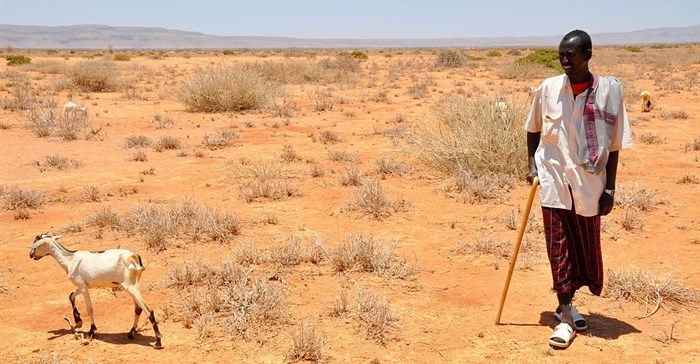Horn of Africa faces acute food shortage

Areas of greatest concern cover much of Somalia, north-east and coastal Kenya, south-east of Ethiopia as well as the Afar region still to recover from the El Niño-induced drought of 2015/16; and South Sudan and Darfur region of Sudan due to the protracted insecurity.
Currently, close to 12 million people across Somalia, Ethiopia, and Kenya is in need of food assistance, as families face limited access to food and income, together with rising debt, low cereal and seed stocks, and low milk and meat production. A pre-famine alert has been issued for Somalia and an immediate and at scale humanitarian response is highly required.
Acute food shortage and malnutrition also remains to be a major concern in many parts of South Sudan, Sudan (west Darfur) and Uganda's Karamoja region.
FAO warns that if response is not immediate and sufficient, the risks are massive and the costs high. "The magnitude of the situation calls for scaled up action and coordination at national and regional levels. This is, above all, a livelihood and humanitarian emergency - and the time to act is now", said FAO Deputy director-general, climate and natural resources, Maria Helena Semedo. "We cannot wait for a disaster like the famine in 2011."
Semedo was speaking on behalf of the FAO director-general at a High-Level Panel on Humanitarian Situation in the Horn of Africa chaired by the United Nations Secretary-General, António Guterres, on the sidelines of the 28th AU Summit (Addis-Ababa). "The drought situation in the region is extremely worrying, primarily in almost all of Somalia but also across Southern and South-eastern Ethiopia, and northern Kenya. As a consequence, with the next rains at least eight weeks away and the next main harvest not until July, millions are at risk of food insecurity across the region," Semedo said.
For his part Guterres said: "We must express total solidarity with the people of Ethiopia on the looming drought, as a matter of justice." The UN Secretary-General called for a stronger commitment to work together.
Drought impacts livelihoods
Repeated episodes of drought have led to consecutive failed harvests, disease outbreaks, deteriorating water and pasture conditions and animal deaths.
"Insecurity and economic shocks affect the most vulnerable people", warned Bukar Tijani, FAO assistant director-general and regional representative for Africa.
"The situation is rapidly deteriorating and the number of people in need of livelihood and humanitarian emergency assistance is likely to increase as the dry and lean season continues with significant negative impact on livelihoods and household assets as well as on the food security and nutrition of affected rural communities," he added.
In 2016, refugees and asylum seekers increased by over 0.5 million to 3 million compared to 2015.
Strengthening FAO's efforts to drought response
"FAO's partnership to build resilience to shocks and crises in the Horn of Africa is critical and will increase," assured Tijani. Recently, FAO and IGAD agreed on some key steps to enhance collaboration in mitigating the severe drought currently affecting the countries in the Horn of Africa region and strengthening food security and resilience analysis.
The two organisations emphasised the importance of enhancing the role of the Food Security and Nutrition Working Group (FSNWG), The Integrated Phase Classification (IPC) and the Resilience Analysis Unit to enhance the effectiveness of the Early warning-Early action and resilience investments. FAO calls for joint priorities to increase and include enhanced coordination, increased and systematic engagement of member states and effective response to member states' identified needs, as well as strengthened resource mobilisation efforts.














